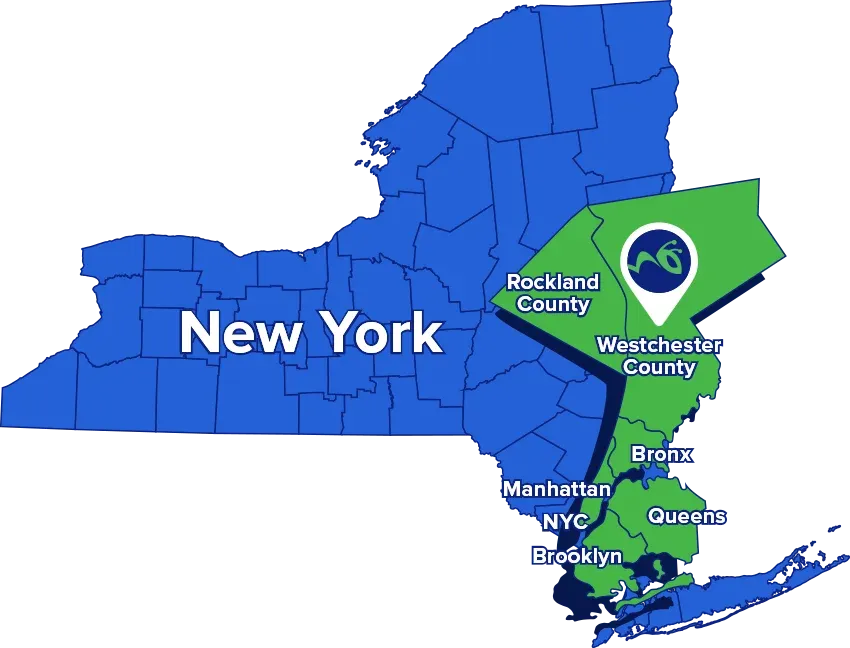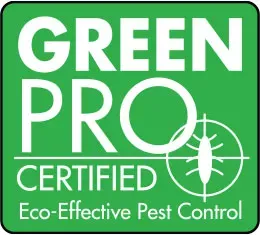Flea & Tick Control in New York
Summer brings with it months of warm weather, sunshine, and backyard fun with your family and pets. Unfortunately, it also means disease-carrying and irritating pests like ticks and fleas run rampant. At Suburban Pest Control, we help homeowners in New York gain peace of mind by creating a protective barrier on their property that keeps fleas and ticks away. With our flea and tick control services, we can significantly reduce the population of these pests in your yard, allowing you, your family, and your pets to relax and enjoy your time outdoors—without the threat of bites and illness!
About Our Flea & Tick Control
For over 30 years, Suburban Pest Control has been protecting our neighbors in New York from the threat of fleas and ticks. Our treatments work to get rid of existing fleas and ticks and create a preventative barrier around your property, so you can stay flea and tick-free all summer long. When you call us for flea and tick control in New York, you’ll get:
- Superb customer service from the time you call our office until we visit and treat your home
- Our satisfaction guarantee—meaning if you’re not completely happy with our treatments, we’ll come back to inspect your property and re-treat if needed.
- The benefit of over 30 years worth of experience in the pest industry.
- A friendly, highly-trained member of our team that is fully dedicated to providing you with solutions
- High-quality treatments that work to eliminate fleas and ticks and allow you to enjoy your backyard all summer long!
Protect Your Pets From Flea Bites
It’s common that fleas attach themselves to cats and dogs, but you don’t need to be a pet owner to deal with flea infestations. These pests use any warm-blooded creature as a host, so they may very well hitch a ride on you as well! Fleas may leave their hosts with itchy, swollen bites, allergic reactions, or, in rare cases, even diseases like bubonic plague, murine typhus, and tapeworms. Most likely, the biggest annoyance that a homeowner has to deal with when they have a flea infestation is just how difficult they are to get rid of. With the expert team at Suburban Pest Control on your side, we can help you live flea-free with our flea control in New York.
Keep Ticks Away From Your Yard
Ticks are not only a threat to you, but also to your pets. Because they attach firmly to hosts and feed very slowly, ticks are the most efficient carriers of diseases, including Lyme disease, Rocky Mountain Spotted Fever, Ehrlichiosis, and more. While these diseases can negatively affect anyone, elderly people, people with weakened immune systems, dogs, horses, and livestock can be especially impacted. While wearing full-coverage clothing outdoors can help keep ticks off of you and your family, it’s likely not a comfortable option in the heat of summer when tick activity is highest. For simple protection from ticks, give Suburban Pest Control a call. Our tick control treatments create a barrier for your yard, so you can roam freely without worry.
Additional Facts About Ticks
Classification
Ticks are arachnids belonging to the sub-class Acari, which includes both mites and ticks. Over 80 species of ticks have been identified in the U.S. These can be divided into two families: the hard ticks (Ixodidae) and the soft ticks (Argasidae). Both families are associated with the transmission of diseases to humans, but the members of the hard tick family are more frequently encountered in and around homes.
Identification
Within the family of hard ticks, there are several species referred to as “wood ticks” that are of key importance due to their frequent interaction with humans in the outdoor environment and the transmission of some serious diseases. Among them are the black-legged tick (deer tick), the Rocky Mountain spotted fever tick (Dermacentor anderson), American dog tick (Dermancentor variabilis) and the lone star tick.
Behavior
The life cycle of the hard ticks involves 4 stages. It begins with the female laying eggs. Depending on the species, clusters of hundreds to thousands of eggs may be laid in protected cracks and crevices, which develop into six-legged larvae. The larvae will then crawl to a place where they may brush up against a passing host. The larvae will crawl onto the animal and begin feeding on its blood. Feeding takes a matter of days before the larvae are fully engorged, at which time it drops off the animal. Several weeks later, the larvae molt and emerge as nymphs. At this time, the nymph climbs again onto a similar site where it waits for the next host animal and repeats the process. The final instar nymph molts into an adult. The adult is capable of waiting significant periods of time before feeding, in some cases 6 to 9 months. Once the adult female has attached to and fed from a host, she then detaches and can only then begin to lay eggs.
Questing
Ticks spend most of their time waiting to attach to a host animal in a process called questing. Ticks can't fly or jump, so they are dependent on their hosts coming to them to provide a meal. In order to take advantage of these opportunities, ticks will climb up the stems of tall grass, weeds, or other suitable objects and wait patiently for a passing mammal to brush up against them. Ticks can sense a suitable host by detecting chemicals cues-especially carbon dioxide, vibrations, and motion. When they sense a host approaching, they hold out several of their legs and cling to it as it passes by or they may simply drop from a perch onto the host.
Health Risks
Ticks have been implicated in vectoring many diseases to humans. Rocky Mountain Spotted Fever, Relapsing Fever, Lyme Disease, and Encephalitis are among the more serious. The real danger from ticks arises from the hosts they choose during the early stages of their life cycle. In many cases, they feed on animals which are reservoirs of diseases. Such is the case for the Black-Legged tick whose larvae and nymphs feed on the blood of the white-footed mouse, a known reservoir of Lyme Disease, then commonly vector this disease to humans. A well-executed tick control program and common sense measures of avoiding tick bites go a long way in reducing the hazards ticks pose around the home.
Nobody likes an unexpected pest problem. That’s why we created our Pest-Free Guarantee.
If pests pop up between regular visits, we’ll come back and take care of it…free of charge.*
✅ No hassle. ✅ No hidden fees.* ✅ Just pest control that actually does its job.
*Includes covered pests under your Proactive Protection membership or details of your targeted pest program.

Areas We Service in New York
Our family has been proudly serving Westchester County, Rockland County, and New York City area with quality pest control solutions since 1974. We know this area, and the pests that are found here, like no other, and are able to create customized pest control plans to better suit your needs!







